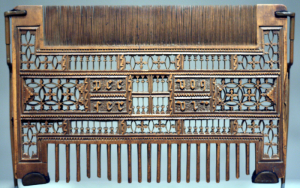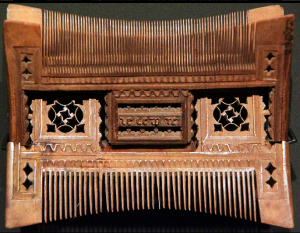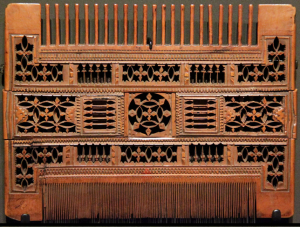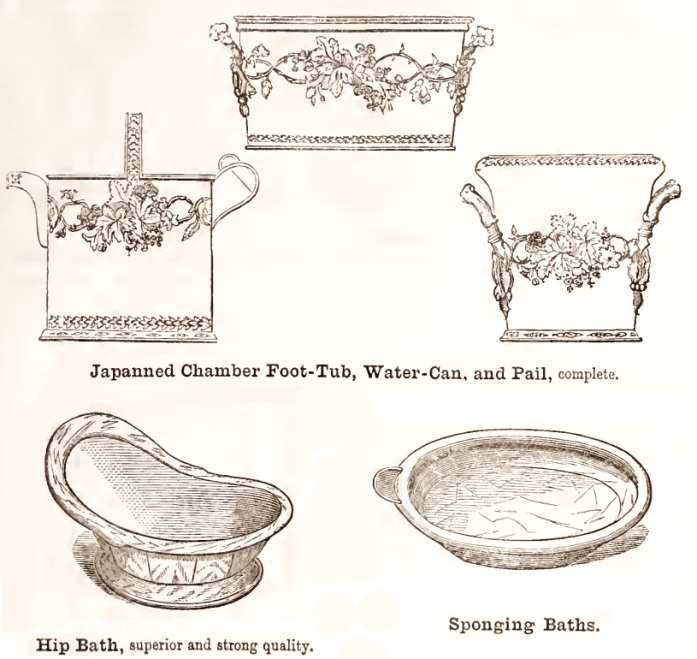
Having no bathroom was no problem for people with servants. Using your bedroom for bathing was normal in the 1800s. Even if you were rich enough to install indoor plumbing, and enjoyed a bath or shower in a brand new bathroom, you wouldn’t necessarily want to give up the convenience of a commode near your bed, a washstand with warm water supplied by the maid or even a nice hip bath set near to all the bedroom furniture and accessories you used for grooming and dressing. This was especially true in big houses in cold weather. Keeping everything in one warm room was a good idea, or you could use a connecting dressing-room or boudoir, and still avoid unheated hallways.
As well as wardrobes, dressers, vanity tables, mirrors and so on, a 19th century middle or upper class bedroom serving as a bathroom too needed:
- Chamber pot or a wooden commode in form of stool or steps, with pot hidden inside.
- Washstand with earthenware bowl and accessories
- At least one water carrier like can, pitcher, jug etc.
- Free-standing wooden towel rail known as a towel horse
- Basin for a sponge bath and/or a hip bath
Other things you might have seen include a bidet, a polished wooden clothes horse to hold clothing overnight, soap dishes, and a foot bath.
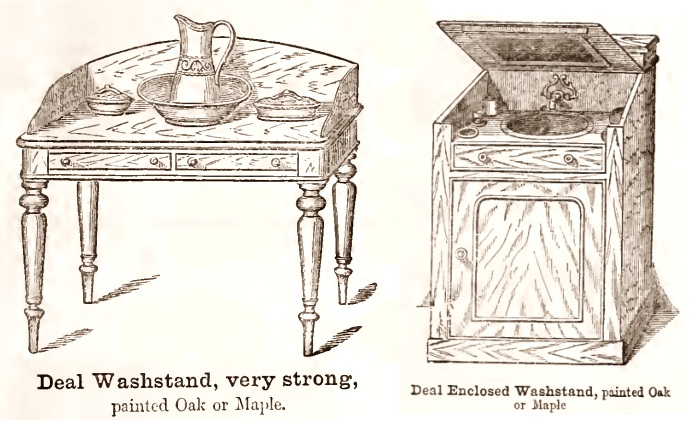
Bedsteps may have been useful for climbing into high beds, but from the 18th century people wanted them to conceal a “pan”. The same cabinet-making skills used for clever, folding furniture displayed in public parts of the house, like convertible library steps, were also applied to making bedroom steps double up as a seat and toilet.

The bidet here is not much like the modern idea of a bidet, especially as the box top looks as if it only has space for a very shallow pan inside under the lid. Still, the sales catalogue discreetly describes it as “complete”. See something similar in the second bidet photo here.
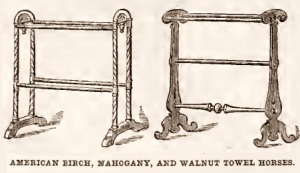
BIDET…. Amongst cabinet-makers it denotes a small stool with four legs, sometimes fixed, and at others to screw off, to render them more portable. They contain a pan made of tin, and japanned, or are of earthen ware, made for the purpose….
The simple box shaped ones are about 5 inches deep…
Sheraton’s Cabinet Dictionary, 1803

The first three pictures on this page are from England in 1875. The last one is from 1874, showing an American inventor’s idea for making a compact piece of furniture that would hide everything away in a kind of convertible vanity table with mirror and doors. No more need for separate washstand and bedsteps or chamber pot.
My invention relates to that class of toilet cases combining a commode, washing facilities, towel-rack, and other devices for use in a chamber or room; and consists in the hereinafter-described parts, combined and arranged in such a manner that the case may, when not in use, present a neat and compact article, capable of being opened out, in its several parts, for several uses incidental to chamber purposes…
Erastus Ewing, US Patent 156,213, October 27,1874
